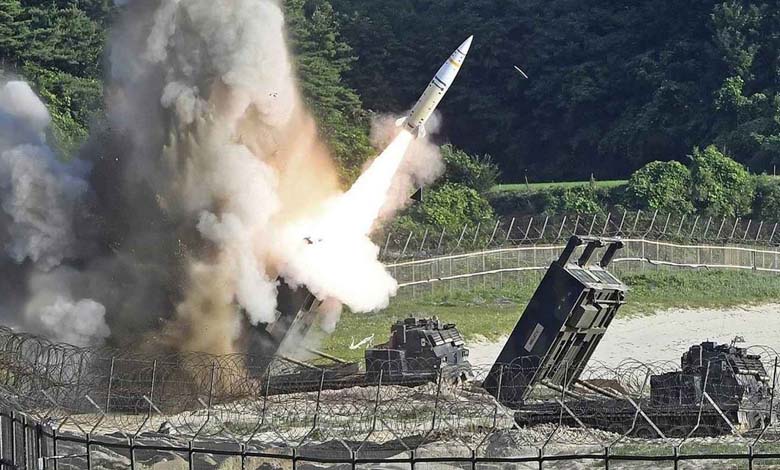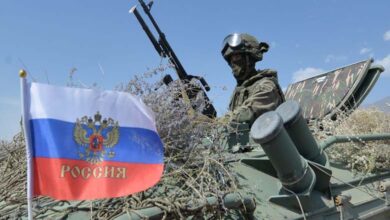Washington’s Bet on Banning ATACMS Does Not Threaten Ukraine… What Is the Secret?

Washington had bet that prohibiting ATACMS missiles would provide it with a key leverage over Ukraine, but the reality on the ground is moving in another direction.
In recent months, Ukraine has strengthened its defense industry and started developing its own long-range missiles, such as the “Flamingo,” making it less reliant on Western supplies than it was at the beginning of the war, according to The Telegraph.
-
Russian Advance in Donetsk: The Battlefield Outpaces Diplomacy in Ukraine
-
Peace in Ukraine: Russia Demands Reliable Security Guarantees
Last spring, the U.S. administration sought to persuade Russian President Vladimir Putin to engage in serious peace talks. Yet one obstacle threatened to derail that effort: Ukrainian deep strikes into Russian territory using American-made missiles. To eliminate that risk, Washington imposed restrictions.
According to The Wall Street Journal, the Trump administration introduced a “review mechanism” that prohibited Kyiv from carrying out cross-border strikes with long-range U.S. ATACMS missiles, or even British Storm Shadow missiles, when targeting data was provided by the United States.
As The Telegraph noted, the aim was straightforward: to prevent a major strike inside Russia that might undermine preparations for a potential peace summit.
-
North Korea’s Chonma-2 to Ukraine: Can It Outperform Russia’s Tanks?
-
Ukraine War and Nuclear Warheads: What Does Putin Want from the Alaska Summit?
These restrictions deprived Ukraine of a valuable morale-boosting tool, but they did not fundamentally alter the balance of power. Even after the partial lifting of the restrictions in the late Biden era, Moscow had already relocated its air bases and ammunition depots beyond the 190-mile range of these missiles.
Despite these limitations, ATACMS missiles achieved notable successes, striking weapons factories and underground depots thanks to their speed and penetration capabilities. Yet their limited supply prevented any large-scale aerial campaign.
The Pentagon delivered only about 500 ATACMS missiles to Ukraine, of which roughly 50 remained by the time the restrictions were eased. Storm Shadow stocks were far smaller.
-
Ukraine War: 5 Possible Scenarios for the Final Chapter
-
Arming Ukraine: A Current Account to Funnel $10 Billion Into an Open War
Neither Britain nor the United States had sufficient surpluses to provide more, given their military priorities in the Middle East and the Indo-Pacific.
Moreover, the growing sophistication of Russian air defense systems, such as the S-400 and Pantsir-S1, further diminished the impact of Ukrainian strikes on Russian soil.
On the battlefield, however, Kyiv did not stop striking deep inside Russia. Instead of relying solely on ATACMS, Ukraine turned to a fleet of drones that destroyed fuel depots worth millions of dollars and contributed to rising gasoline prices in Russia.
-
Explosive July in Ukraine: Zelensky Reveals the Black Harvest
-
Fiery Ping-Pong Between Ukraine and Russia: Deaths, Fires and Concerns
As Anders Puck Nielsen, a military expert at the Royal Danish Defence College, explained: “It is clear that the ATACMS ban was not a major issue, since Ukraine has intensified its strikes inside Russia using domestic alternatives.”
Alongside this, Kyiv is developing a new cruise missile called the “Flamingo,” with an estimated range of 3,000 kilometers, expected to enter service before the end of the year.
Although slower than ATACMS and Storm Shadow, mass production of the Flamingo would give Ukraine the capability to target major cities like St. Petersburg without requiring U.S. approval or support.
-
Russia Destroyed Most of Them: How the Reign of the Abrams Tank Collapsed in Ukraine
-
20,000 drones in six months: Drone factories fueling the war in Ukraine
So far, Donald Trump has continued to bet on tightly controlling the pace of military support to avoid undermining his attempts to bring Putin to the negotiating table. Yet if his patience runs out, he may once again lift the restrictions on ATACMS—or even go further and supply Kyiv with Tomahawk missiles, which have a range of 2,500 kilometers.
In any case, Ukraine has sent a clear message: complete reliance on Washington is no longer an option. Its domestic defense industry, now bolstered by growing technological capabilities, is increasingly capable of filling the gap and turning the war into a longer and more painful confrontation for Russia.












